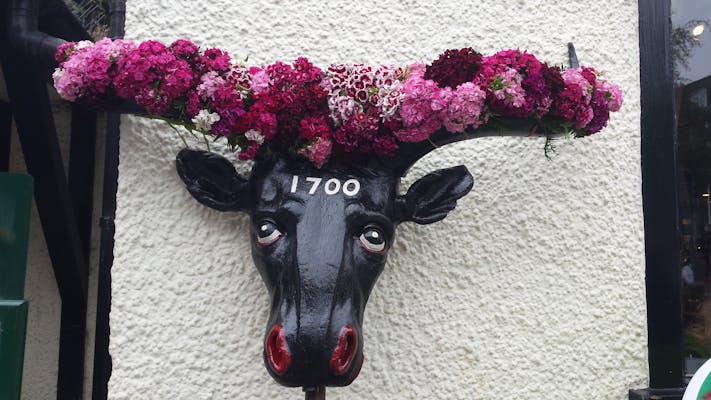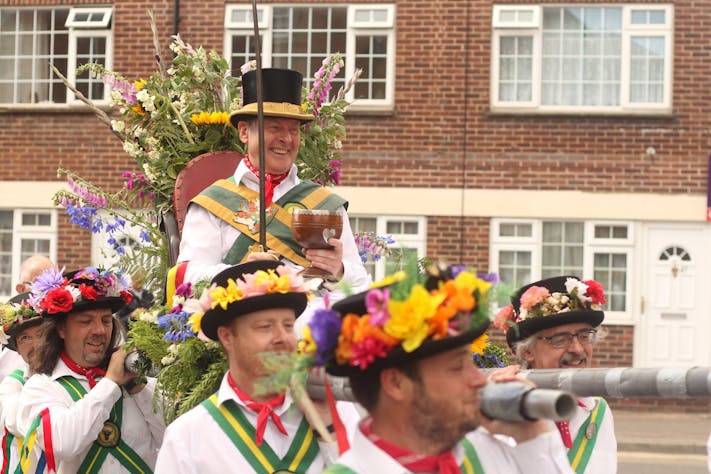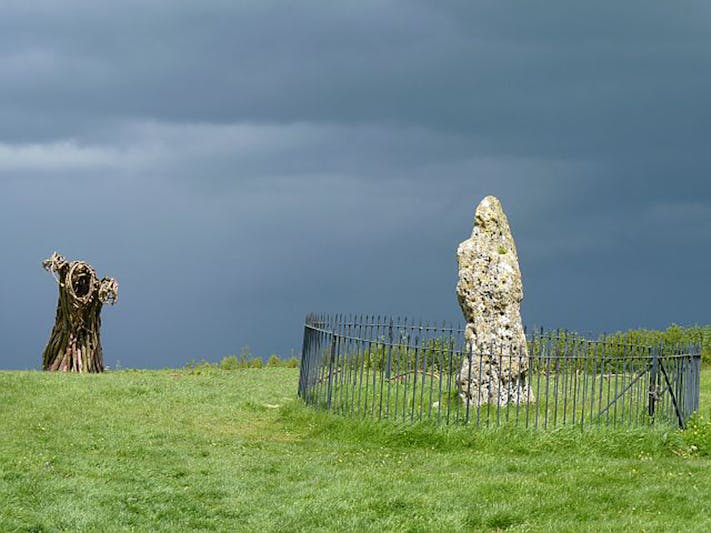Oxfordshire has a rich history of folklore and traditions, many of which are still going strong today. Read on for Daily Info's primer on Oxfordshire folk customs and legends.
Horns of Ock Street

The Horns of Ock Street are the insignia of the Abingdon Traditional Morris Dancers, and have a rather delicious history. In 1700, an ox was roasted in Abingdon's market square. After the feast, two Morris sides, the Vineyard Men and the Ock Street Men, fought each other for the privilege of owning the horns. The Ock Street Men won, and, to this day, will not dance unless the Horns are present.
Mayor of Ock Street

More mischief on Ock Street - the election of the mock mayor is an annual tradition that goes back centuries. Traditionally, the mock mayor would be a popular local person, whose job was to embarrass the real mayor and the council whenever they made decisions that the townsfolk didn't like. Nowadays, the mock mayor is elected from the membership of the Abingdon Traditional Morris Dancers, and as far as I can tell at time of writing, generally spares the council any blushes. The election takes place on the Saturday nearest midsummer, and, after the mayor is chosen, he is carried along Ock Street on the shoulders of the rest of the Morris side, holding a sword and an applewood chalice known as the Mace. The mock mayor is preceded by the Horns of Ock Street.
Rollright Stones
The Rollright Stones, three Neolithic and Bronze Age megalithic monuments, are one of Oxfordshire's most famous landmarks. The first circle of stones is known as the Whispering Knights, the second as the King's Men, and the final, single monolith is known as the King's Stone.
According to legend, the King's Stone and the King's Men are what remains of a king and his army, who were transformed into stones by a witch called Mother Shipton. The Whispering Knights are said to be part of the same army; their whispered plots against their king gave them their name. Another legend states that the King's Stone comes alive when the clock strikes midnight - although if this is true, the petrified king clearly doesn't move very far. Mother Shipton herself is still present near the stones, in the form of an elder tree; if she's ever cut down, the king and his knights will come back to life.

There are many superstitions around the Rollright Stones. Visitors are advised not to try to count the King's Men. It's either impossible, or, if you succeed in counting the same number of stones three times in a row, fatal. (There is an alternative view, that anyone who counts the stones three times and comes up with the same number will receive their heart's desire - so, if you want to take the risk, it may be worth it). It's also a bad idea to chip pieces off the stones - not only will you fall foul of the Rollright Trust, but the wheels of your cart (or, more likely, car), will never move again.
The Rollright Stones are a place of culture as well as legend. The Rollright Trust allows a performance of a Shakespeare play at the stones once a year, and the stones also featured in a 1978 Doctor Who serial, 'The Stones of Blood'.
Uffington White Horse
South of Faringdon and west of Wantage, up on the Berkshire Downs, you can find the Uffington White Horse. Dating from the late Bronze Age or early Iron Age, the White Horse is the oldest horse hill figure in the British Isles. Because of its alignment with the sun, some historians have argued that it's a 'solar horse' (a mythical horse which pulled the sun across the sky) rather than a literal one - it's also been suggested that it might actually be a dog, or even a sabre-toothed tiger. Whatever it was originally intended to be, it's been known as the White Horse for centuries, and has lent its name and emblem to the Vale of White Horse, several local organisations, and a selection of Oxfordshire pubs.
Wayland's Smithy
Just a mile away from the White Horse, this famous folkloric landmark is a neolithic long barrow and chamber tomb. In fact, it's the remains of two barrows - one from 3590-3550 BC, which housed the remains of fourteen people, and a later barrow built in 3460-3400 BC.
The legend states that the barrow was once the home of Wayland, the Saxon god of smithing and metalworking. Thanks to its legendary resident, it is said that if you leave your horse tethered at Wayland's Smithy overnight, with a coin for payment, you can come back in the morning to find the horse shod. This story provided the inspiration for a moment in Terry Pratchett's Carpe Jugulum: "One or two of the old barrows had been exposed over the years, their huge stones attracting their own folklore. If you left your unshod horse at one of them overnight and placed sixpence on the stone, in the morning the sixpence would be gone and you’d never see your horse again, either..."
Lords of Misrule
The tradition of a Lord of Misrule isn't unique to Oxford, but Oxford has put its own particular spin on the idea. This medieval to early modern custom involves giving ceremonial power to someone, usually a peasant or a low-ranking member of the church, for the Christmas period. The Lord of Misrule would be in charge of the Christmas celebrations, and lead the gathering in drunken partying.
In 1607 at St John's College, the students' Halloween celebrations got out of hand, so the college tried to appoint a Christmas Prince - their version of the Lord of Misrule - to keep the festivities under control. This proved to be more difficult than you might expect - the first two Christmas Princes chosen by the college ran away, but the second was hauled back and forced to run the party. The St John's Christmas Prince traditionally made sure that student plays were performed for the Christmas period. He also had the power to set up his own parliament, and demand taxes to pay for the celebrations.
Oxford Superstitions
There are some interesting local superstitions and beliefs in Oxfordshire, connected to the local towns and villages. Here are a few of my favourites.
Shillingford: It's bad luck for babies to be taken outside before they're a month old.
Lower Heyford: No baby under a year old should be allowed to see its face in a mirror or have its nails cut, or they'll grow up to become a thief.
Ducklington: Losing a milk tooth is unlucky - unless you burn it afterwards.
Beating the Bounds
Beating the bounds is a tradition across the UK, and was intended to remind local people of the boundaries between parishes. It involves members of the local walking to the boundaries of the parish on Ascension Day, and beating the boundary markers with willow wands. (Some stories also claim that the local church's choirboys were beaten at the same time, to really make the memory of the boundaries stick). Local Oxford people still beat the bounds between three parishes in the city centre. One of these boundaries now runs down the middle of Marks and Spencer, and the procession makes an entertaining sight for the bemused shoppers.



